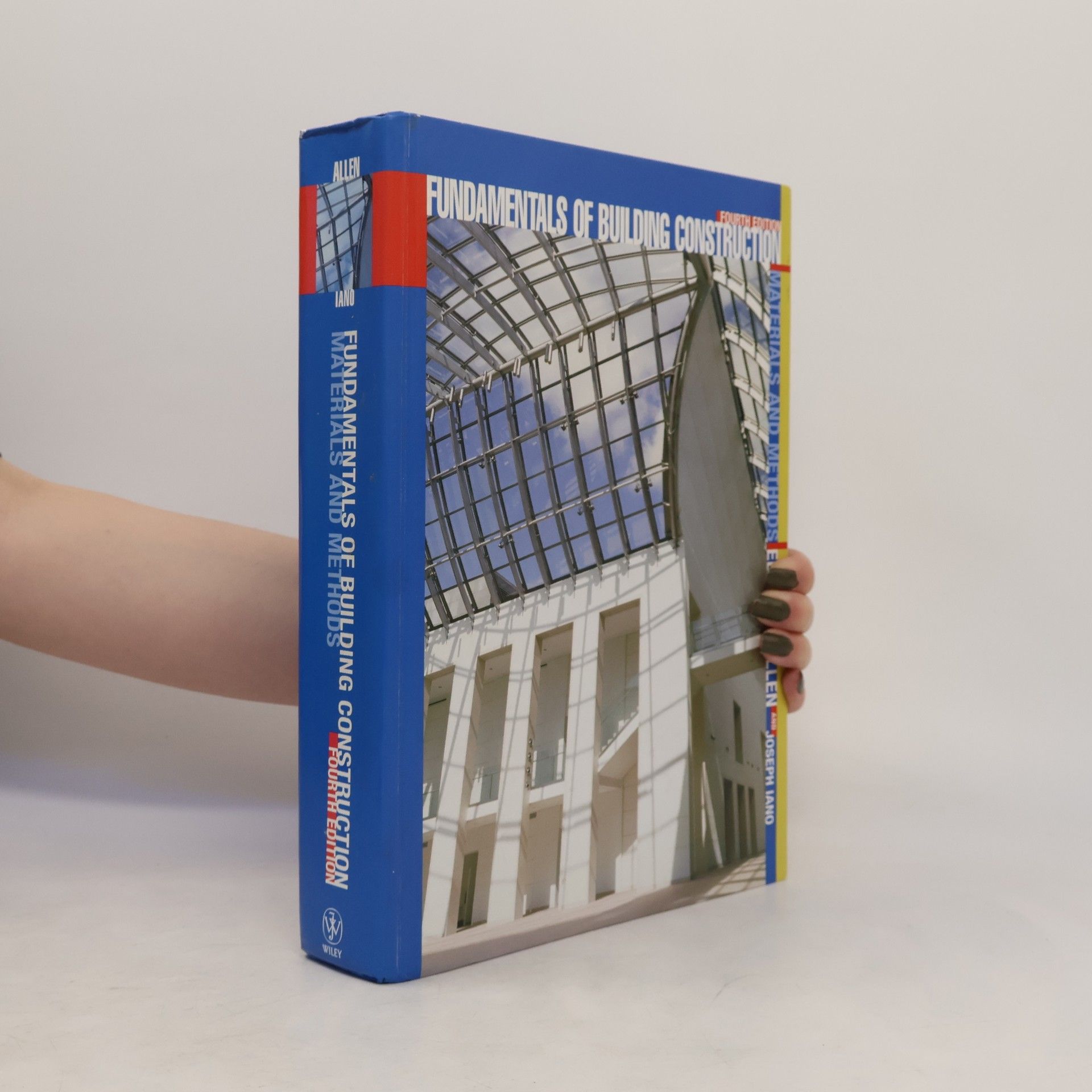Architectural Detailing
- 384 pages
- 14 hours of reading
"Reviews recent built works and extract underlying principles that can be the basis for new patterns or for additional aspects of existing patterns"--


![Form and Forces: Designing Efficient, Expressive Structures [With DVD ROM]](https://rezised-images.knhbt.cz/1920x1920/0.jpg)



"Reviews recent built works and extract underlying principles that can be the basis for new patterns or for additional aspects of existing patterns"--
This essential companion to Fundamentals of Building Construction, Sixth Edition, involves students in the types of everyday issues faced by professional building architects.
Illustrated with many line drawings, this guide provides information on a building's function: how it stands up, keeps its occupants safe and comfortable, gets built, grows old, and dies - and why some buildings do this so much better than others. It is intended for architects, superintendents, and students of architecture and construction.
Focusing on the principles of architectural detailing, this guide emphasizes the importance of aesthetics combined with functionality in building design. It provides insights into creating effective details that ensure clarity for various users and facilitate collaboration among industry professionals. The book covers best practices for preventing leaks, managing heat and moisture, accommodating movement, and simplifying construction. The fourth edition includes updates aligned with the latest building codes and advancements in materials and construction technology.
Materials and Methods
Now in its Fourth Edition, Fundamentals of Building Construction is an essential textbook that has been used by thou-sands of students annually in schools of architecture, engineering, and construction technology. The best-selling reference focuses on the basic materials and methods used in building construction. Emphasizing common construction systems such as light wood frames, masonry bearing walls, steel frames, and reinforced concrete, the new edition includes new coverage of green design and energy-efficient construction energies, and is based on the International Building Code(r).
Designing Efficient, Expressive Structures
Here, in one volume, is all the architect needs to know to participate in the entire process of designing structures. Emphasizing bestselling author Edward Allen's graphical approach, the book enables you to quickly determine the desired form of a building or other structure and easily design it without the need for complex mathematics. This unique text teaches the whole process of structural design for architects, including selection of suitable materials, finding a suitable configuration, finding forces and size members, designing appropriate connections, and proposing a feasible method of erection. Chapters are centered on the design of a whole structure, from conception through construction planning.
Un igloo nell’Artico obbedisce alle stesse leggi fisiche di una casa di bambù ai Tropici. Un grattacielo dalle strutture in acciaio non è poi così lontano come potremmo credere da una casa su un albero. Un edificio vive e cresce, come qualsiasi organismo: occorre prevenirne i processi di senescenza, evitarne il deterioramento, effettuarne utilmente la manutenzione ordinaria. Le funzioni dell’edificio, i princìpi del disegno e della costruzione edile, vanno finalizzati alla conciliazione, alla convivenza armonica tra uomo e ambiente, senza conflitti e prevaricazioni. Il calore, il freddo, il rumore, l’acqua, l’inquinamento, tutti gli agenti atmosferici e della moderna realtà urbana vengono analizzati nelle loro molteplici caratteristiche e messi in rapporto con le modalità costruttive, al fine di un uso più razionale e corretto dei materiali e di una loro maggiore durata nel tempo. Più di 300 illustrazioni corredano e arricchiscono il testo.